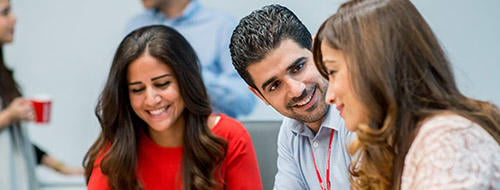New research by Nestlé reveals that despite 90% of Aussies noticing the amount of food packaging and half (54%) looking for less packaging this Easter, just 5% of Aussies consider the amount of packaging waste as an important factor when purchasing Easter eggs.
While nearly half of respondents (49%) are drawn to the biggest Easter egg box, a careful look at the shelves shows that bigger packaging doesn’t necessarily mean a bigger sized egg.
Nestlé is shaking up the bigger-is-more perception by hatching a new Easter range packed without hard plastics. Aussie favourites such as KitKat, Allen’s lollies and Milkybar Easter boxes are boasting 50% less packaging weight compared to the average packaging weight of Australia’s five top-selling boxed Easter egg sets of similar net weight.1
The new range eliminates the need for the traditional, rigid plastic used in many Easter egg boxes and all packed in a 100% recyclable box. Of the total weight – Easter goodies plus packaging, Nestlé packaging is clocking around just 19% of its Easter boxes, compared to around 41% packaging weight for the five top-selling boxed Easter eggs of similar net weight in Australia 1 – meaning Aussies are getting a lot less packaging with their boxed gifting eggs.
This comes at a time when Aussies largely disregard their normal recycling habits. Only 1 in 4 Aussies (22%) admit to separating out Easter egg packaging for recycling, compared to the rest of the year, when 62% commit to sorting their recycling. Nestlé packaging also features the Australasian Recycling Label to help people know what bin to put it in.
Sustainability expert and Research Fellow at Monash Sustainable Development Institute Jenni Downes reveals why we are drawn to the biggest pack on the shelf and the importance of making changes to product packaging.
“On special occasions like Easter, many Australians continue to be attracted to bigger packaging - either consciously or unconsciously. The work by Nestlé in taking such a ‘counter-cultural’ step in the absence of an industry wide commitment to do the same is both a brave and needed move. It is exciting to see such a holistic approach taken by a private business, on the strength of its own sustainability commitments.”
Nestle Director of Sustainability Margaret Stuart comments, "We want to break the mould that says a bigger pack means a bigger egg. Using less packaging meant carefully considering every detail so we could deliver our Easter eggs in a fully recyclable box"
“Across Nestlé, we are working to make all or packaging recyclable or reusable and reduce our virgin plastic use by a third by 2025, so getting the details right is critical. We need to be innovative. Easter, which sees a significant increase in chocolate gifting purchases, is a key time to shake up the category and start a conversation around packaging.”
The new range includes Aussie favourite brands, such as KitKat, Milkybar, Allen’s Retro Party Mix, Allen’s Freckles and Allen’s Mini Chocolate Raspberries and is available now for RRP $10. Visit your local supermarket or grocer for availability.
Jenni Downes’ tips for a more sustainable Easter in 2022:
REDUCE -
- Only buy eggs that you know will be enjoyed, and (as much as possible) reuse, repurpose or make your own gifts, wrapping and decorations
- Check the packaging weight vs product weight when selecting Easter chocolate (bigger boxes aren’t always better!) and choose eggs that have less packaging.
- Plan any Easter feasts, to get portions right and be able to make use of leftovers, reducing food waste and saving you money.
REUSE -
- Create your own DIY Easter basket by weaving your own from old paper or other materials.
- To decorate, you can paint stones or fir cones with the kids or keep the shells of eggs you are cooking with.
- You can also buy second-hand decorations from charity / op shops.
RECYCLE -
- Look for products and packaging made from recycled materials
- Look for the Australasian Recycling Label, to help place the plastic, aluminium and cardboard wrapping of your chocolate Easter eggs in the correct waste stream.
- Scrunch all your Easter egg foil together when recycling. You need a golf ball size to place in your recycling bin.
- Collect any flexible plastic packaging and return to a REDcycle bin at many local supermarkets
1At least 50% less packaging weight vs average packaging weight for top 5 selling boxed Easter egg sets of similar net weight in AU [Coles/Woolworths] and NZ [Countdown/New World] Easter 2021.
The RRP is a recommended price only. There is no obligation to comply with the recommendation and retailers are free to set their own price.

